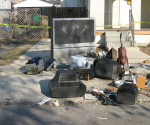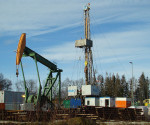Building with Structural Insulated Panels Over the Years
Building materials and techniques underwent significant changes in the last century. Most notably, the concept of using structural insulated panels (SIPs) first came about in 1935. Engineers at the Forest Products Laboratory in Madison, Wisconsin started experimenting with plywood sheathing to create boards combining conventional insulation materials with plywood sheaths.

Experimental homes built using the earliest prototypes of SIPs were monitored while ongoing developments to the design and materials were made. A revolutionary advancement in SIP technology came about in 1952 when the first SIP using a foam core insulation was developed.
Years later, SIPs using oriented strand board and a foam insulation core became widely available for home construction. Today, the SIP panels UK manufacturers construct are coupled with the technology used in manufacturing and design.
Why SIPs continue to gain the attention of builders
There are many benefits to using SIPs in building residential homes, commercial buildings, and other projects. SIPs not only increase the structural stability of a structure, but they can also significantly reduce the construction time. SIPs are considered a green material because of the superior insulation property they lend to a finished structure.
Tips for first-time SIP builders
If you are a builder using SIPs for the first time, it may seem somewhat challenging. Working with SIPs requires a few unique techniques.
- You need to pre-plan electrical wiring. Planning is an essential part of achieving success when building with SIPs. Before requesting the factory to pre-cut the boards according to the required specifications, you also need to provide them with the plan for electrical wiring and chases. Although it is possible to adjust and modify SIPs, it can be time-consuming and costly.
- Plan equipment needed for installation. Depending on the size of the structure and the boards being used, you may also require a forklift for installation. Before the start of the project, all equipment necessary should be prepared and on site.
- Organise panels. To ensure a faster build, the boards need to be arranged according to the sequence of installation. It is also vital that panels are stored in an elevated area protected from moisture.
- Post-installation protection. After erecting the panels, house wrap, or a protective covering, needs to be installed to prevent the boards from getting wet or damaged until they are fully covered with render.
Other crucial considerations when building with SIPs include determining the right HVAC size, the overall size of the structure, the location of air ducts, and doors and window specifications.
SIPs have yet to reach mainstream recognition around the country, but there is a growing interest in using SIPs as an alternative to traditional timber-framed structures. In some projects, SIPs are also used in combination with other conventional materials to enhance insulation and durability. Although SIPs have been around since the 1930s, very few people are familiar with them. Nonetheless, it is likely that the current shift to eco-friendly building practices will make SIPs a preferred solution for many construction projects in the future.
Author: Oliver Samson















[…] Building with Structural Insulated Panels Over the Years […]